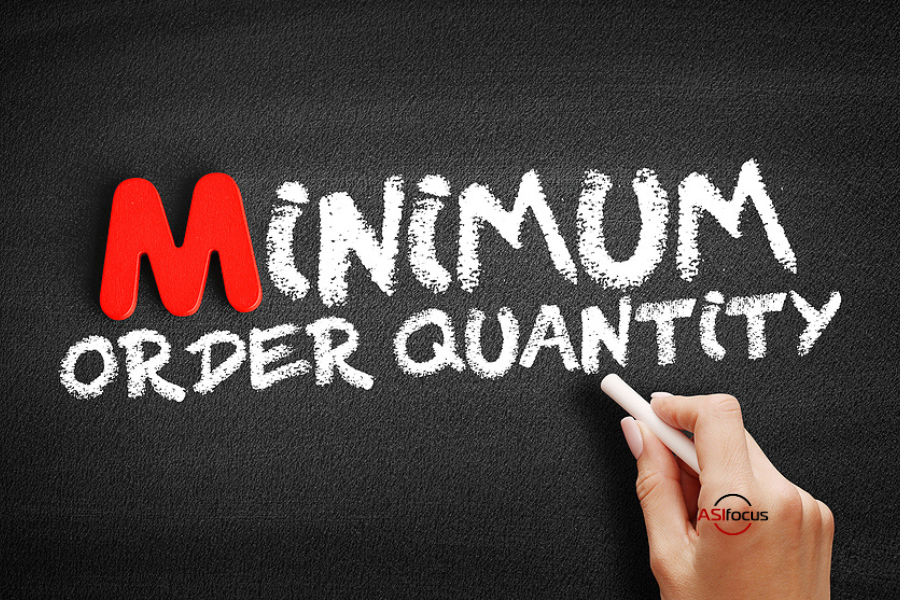In the realm of business, every choice has the potential to influence your financial success. One such critical decision is understanding and applying the concept of minimum order quantity, commonly known as MOQ. This concept is essential for business owners across various sectors, including manufacturing, retail, and logistics.
Grasping the nuances of MOQ can significantly impact production expenses, inventory control, and pricing strategies. By mastering MOQ and aligning it with your business model, you can enhance your profit margins.
What is MOQ?
MOQ represents the smallest number of units or dollar amount that a supplier or manufacturer is prepared to sell. For retailers or distributors, MOQ denotes the minimum volume of an order that can be placed without incurring additional costs or limitations.
The Significance of Minimum Order Quantity in Retail and Manufacturing
MOQ may appear to be just another figure to monitor, but it’s a crucial profitability lever that requires careful calculation. For manufacturers, a higher MOQ can lead to economies of scale, which can lower production costs. Economies of scale occur when a manufacturer produces enough units to align production costs with their break-even point.
For retailers, understanding MOQ is vital for negotiating prices and planning inventory. Knowing suppliers’ MOQ allows retailers to commit to monthly orders that meet or exceed MOQ, potentially securing better prices. It also aids in determining storage requirements and managing cash flow effectively.
The Minimum Order Quantity Calculation
While there isn’t a simple formula for calculating MOQ, it’s derived from analyzing production costs, demand forecasts, supplier limitations, and storage capacities.
A low MOQ suggests less commitment and flexibility but may come with a higher unit price due to the lack of economies of scale. While low MOQ offers advantages like reduced stock holding costs and adaptability, it’s important to calculate whether it will lead to profitability. Market demand prediction is essential for any business with inventory holdings.
A higher MOQ can lead to economies of scale and lower unit costs, but it requires a strategic evaluation of storage capabilities, cash flow, and consumer demand.
In shipping, MOQ influences container loads and shipping rates. Higher MOQs can result in bulk shipping discounts but require larger storage solutions upon delivery. Bulk production and shipping can standardize packaging and reduce packaging costs. However, lower per-unit costs aren’t always optimal. Businesses must conduct cost analyses to determine the best approach.
Determining the Optimal MOQ for Your Business
Adjusting MOQ involves a deep understanding of internal business operations and external market trends to maintain profitability and efficient resource allocation. Each business has its own set of characteristics that influence the ideal MOQ. Business size, industry sector, and consumer demand are key factors in this determination.
New ventures and small enterprises might prefer a lower MOQ to gauge market response and manage financial resources. In contrast, larger companies may pursue a higher MOQ to take advantage of lower per-unit costs.
While opting for suppliers with lower MOQs can minimize initial risk by conserving cash flow and storage space, it may also lead to increased per-unit costs that could diminish profit margins. Conversely, a higher MOQ could secure a more favorable unit price but requires significant initial investment and carries the risk of unsold inventory if sales projections are not met.
Business environments are subject to change, necessitating periodic reevaluation of MOQ in response to growth or strategic shifts. Key considerations include:
- Storage Capacity: Assess whether your current facilities can accommodate an increase in inventory.
- Cash Flow: Review your financial statements to determine if your business can sustain the investment in larger inventory quantities.
- Market Demand: Analyze sales trends and market research to ensure that an increase in MOQ aligns with actual or anticipated demand.
It’s essential to base adjustments on solid data and trends rather than assumptions. Engaging in market research, evaluating sales figures, and consulting with analysts can provide valuable insights into whether an increased MOQ is warranted.
Strategically Harnessing Data to Determine MOQ
In the complex decision-making process of business management, it’s crucial to have access to as much data as possible—organized as clearly as possible. That’s where an ERP comes in. If you’re ready to start making more data-driven decisions (like determining your MOQ), contact us or schedule your free consultation today.

